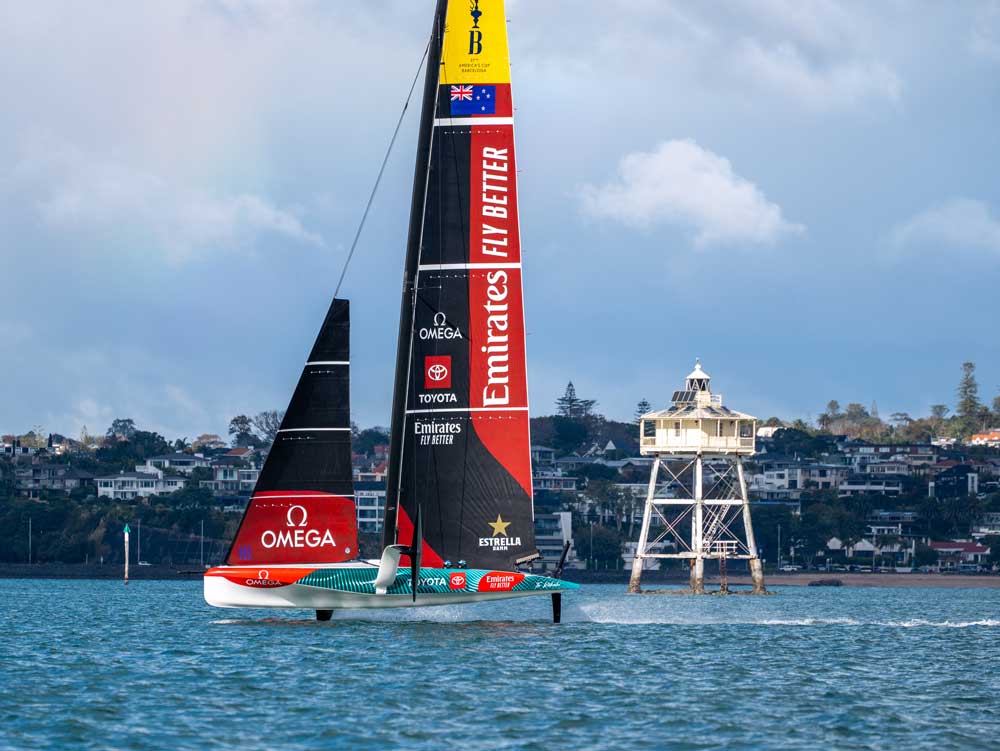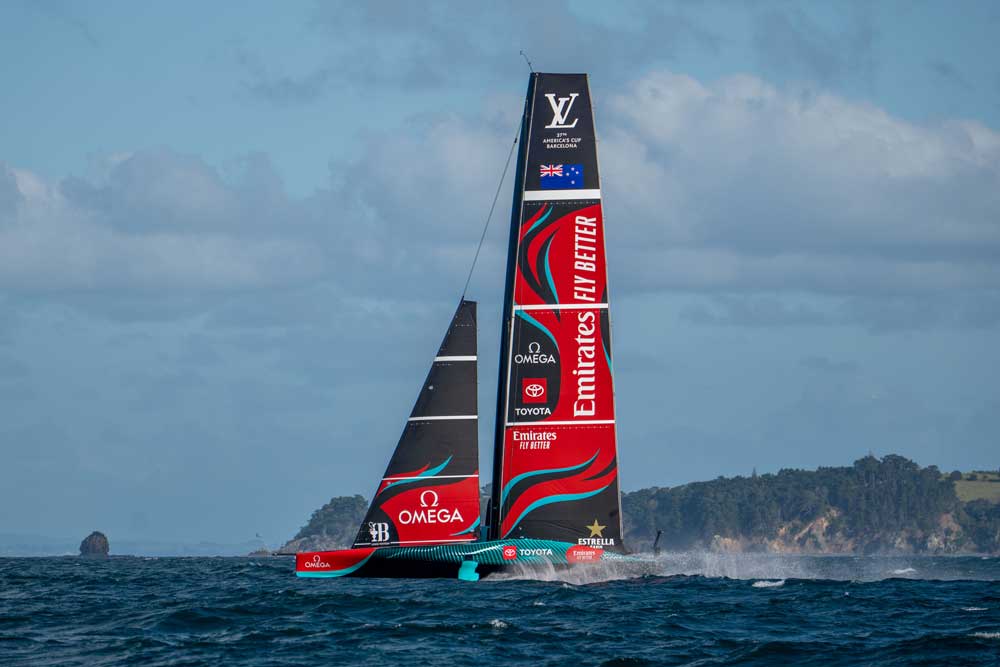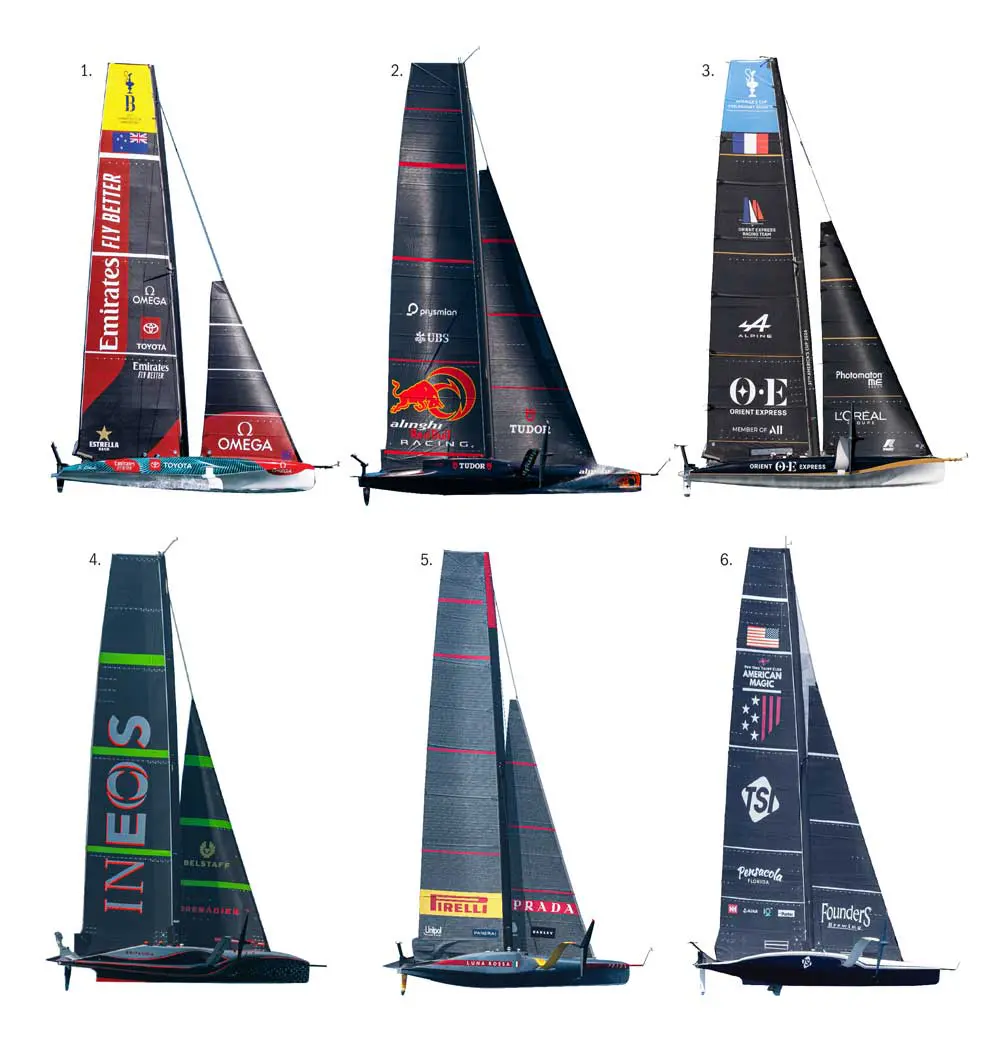Bluffer’s Guide To the America’s Cup
The America’s Cup has rolled around again and, whilst it’s not being held here in New Zealand this time, it is still an event definitely worth following – even if yacht-racing doesn’t really turn your crank. For the next few months, every time you go to the pub or a BBQ, there will be at least one person there rabbiting on about it. So you have a choice; either to keep trying to change the subject back to Razor and chums, or to go with the flow.
Unhelpfully, the America’s Cup is not a simple subject; as the more you learn, the more complex it becomes. But there is a happy sweet spot. Like the way no one fully understands Photoshop; we just learn enough basics to get by – it is the same with the America’s Cup. With this in mind, we have sketched out some of the basics you’ll need to get by for the next few months in all those bars and backyards:
What is the America’s Cup?
Simply, it is the world’s oldest – and ugliest – sporting trophy. The ultimate prize in yacht racing superrich guys have been competing for since way back in 1851.
Why is it called that?
Because the first yacht to win the trophy was called ‘America’ so it became ‘America’s Cup’. It was self-perpetuating for a long time too as only American yachts won it until the Aussies nicked it off them in 1983. They’re probably still kicking themselves they didn’t rename it ‘Aussie’s Cup’ at the time.

Who currently holds it?
The Goodies. Emirates Team New Zealand won it off Larry Ellison’s Oracle Team USA back in 2017. Our guys also successfully defended the Cup in 2021 against the dastardly Italians; Luna Rossa Prada Pirelli.
How often is there a challenge for the America’s Cup?
Whenever they feel like it. In more recent times this has tended to be every 3-5 years or so but there are many variables that can affect this such as on-going legal battles and extravagantly expensive waterside real estate price fluctuations to contend with.
Has the America’s Cup got anything to do with Sail GP?
Technically no – although both are yachting events with boats on water and involving sailors with names like; Peter Burling, Tom Slingsby, Ben Ainslie and Jimmy Spithill. Plus, Sail GP is fleet racing whereas the America’s Cup is one-on-one match-racing.
Sail GP is also very new, only being set up by Larry Ellison in a fit of pique after he lost the America’s Cup in 2017: ‘If I can’t have it, I’m gonna create my own trophy!’

Who’s this guy Larry Ellison?
Lazza took over from Dennis Conner as the pantomime hissable American ‘heel’ competitor with incredibly deep pockets and a phalanx of super-lawyers in tow. Officially he’s not involved this time but the American challenge is pretty opaque – so it wouldn’t be surprising if he’s in there somewhere ‘advising’.
Isn’t it a billionaire’s sport?
No. thanks to inflation you now have to be a kajillionaire in order to own a team. This has led to a thinning out of the field over the years whereas there used to be heaps of Challengers back in the day. Even a fleet of Challengers to decide the Defender!
If you don’t believe us, check out the ‘backers’ of each current team: Jim Ratcliffe, INEOS chemical baron; Patrizio Bertelli, CEO of Prada Group; and Ernesto Bertarelli, Swiss(!) biotech entrepreneur. No one knows for sure who’s behind the murky American Magic team – but it’s a safe bet they won’t be everyday battlers. The closest to that are Team New Zealand although they do have some small logistics company called Emirates involved…

Why is it so bloody expensive?
Look in a dictionary for the definition of ‘expensive’ and you’ll see: ‘The America’s Cup’. Everything about it is the most inefficient, cack-handed, long-winded and ridiculously cost-heavy way of doing things – but then again, so is Formula One!
First of all; there are the yachts themselves and the Rules stipulate that each team has to ‘build one AC75 and purchase ‘at least’ one AC40’ plus a test boat ‘Less than or Equal to 12 metres in overall length.’ These are multi-million dollar boats we’re talking about here – up to US$10m in the case of the AC75! Then each boat has a dozen crew and reserves plus an absolute army of support staff, technicians, builders, security – to say nothing of the massive boat design and technical development teams for each outfit. All these people have to be housed, fed and watered for years on end in some of the most expensive waterfront real estate in the world too.
Get the picture? Basically, if you can’t afford your own Formula One and/or EPL team – the America’s Cup is waaaay out of your league!
How does it all play out?
Oh, easy… not! Basically, the whole thing started with a series of Preliminary Regattas held in Vilanova, Jeddah and – soon in Barcelona. These achieve nothing but practice and testing really as, understandably, everyone is shadowboxing for the real deal later.
The America’s Cup proper starts with a Challenger Series called the Louis Vuitton Cup. This is decided by a double round of match-racing between all the Challengers leading to a first-to-five win Semi-Final and first-to-seven Final. The winner of this Cup decides the ultimate Challenger who goes on to match-race Defender Emirates Team New Zealand to a first-to-seven series to find the America’s Cup winner. Whew!

Huh? Why, why, why?!
Look, if it all seems needlessly complex you’ve just got to remember that the America’s Cup was developed around the time of the Crimean War – when a Challenger was attacking a Defender for the Crimean Peninsula. So, it made a lot of sense at the time as it was what they knew.
This was also the same era when other oddball sports like cricket and rugby were having their first rules drawn up. So, if you think about the kind of mind that dreams up something as random as a ‘scrum’ or a ‘leg-before-wicket’ decision first, you’ll understand America’s Cup regulations a lot better.
But… but isn’t yacht-racing boring?
It used to be! Not so long ago, people used to perch on clifftops peering through binoculars at some barely-moving white triangles way out at sea – but not anymore!
Now with the foils, tracking tech and vastly improved comms delivery not only is the sport better, faster, stronger but it’s a lot easier to follow too. And potentially, to even get excited about!

Is the America’s Cup a high-tech sport?
These days, very much so! Once upon a time yacht science meant holding up a wet finger to gauge the wind then tweaking a rope to harness it. Nowadays the tech has seeped into every crevice both on-board and off. Orient Express estimated they collected 3000 variables and 20 gigabytes of video data every sail day on things like sail shapes, hull stresses, rig loads, hydraulic pressures, electronic aide stability, ride height, pitch modding, rudder rake, foil cavitation and foil arm immersion depth.
But it isn’t just the data-crunching stuff, the design innovations are transformative too with perhaps the biggest impact coming from the (hydro)foils Team New Zealand introduced in 2012. These foils instantly converted lumbering ‘boats’ into near-flying ‘craft’ by lifting the hulls completely out of the water at pace – thus vastly reducing friction drag and massively increasing speed. The net result was to transform the America’s Cup from a rather turgid affair into a thrilling contest, as if the Timeless Test Cricket matches of the 1930s had morphed into IPL Twenty20 matches overnight!
Is it worth following?
Totally! The America’s Cup is similar to Formula One in that a lot of new tech is trialled here so if you want to see what the future looks like, you’d be best to tune in. The guys running these yacht syndicates have the contacts to source the brainiest new ideas out there plus the money to develop them into kickass new tech which can change the world. A lot of that development will happen right before our very eyes too – if we’re watching the races.
And that’s definitely something worth discussing at any bar or BBQ!

1. Emirates Team New Zealand 2. Alinghi Red Bull Racing 3. Orient Express Racing Team
4. Ineos Britannia 5. Luna Rossa Prada Pirelli 6. American Magic

